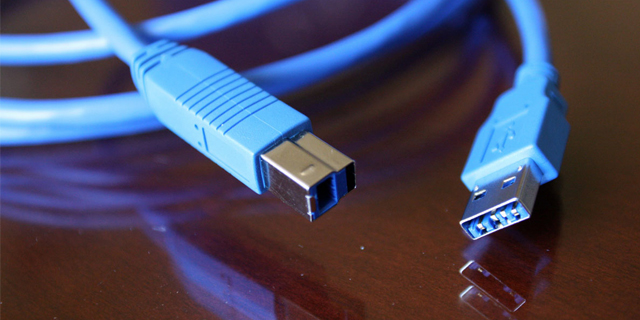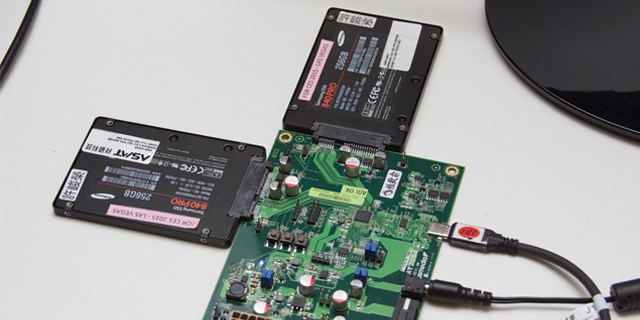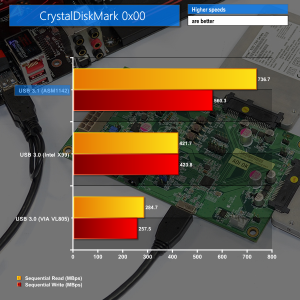
While many of us are still to ditch the aging USB 2.0 gadgets and replace them with the blue connectors of USB 3.0 which are considerably faster, a supplementary standard for USB gadgets is on the point of hitting the mainstream. There is no doubt that the brand new USB 3.1 has grabbed numerous headlines recently. And this more than likely happened because it was included on the latest MacBook. Since Apple got rid of all the other ports – due to USB 3.1′s greater bandwidth and higher power delivery, Apple decided to give up the charging port as well- , demonstrates that this will soon become a common standard and not simply something that we might see some time in the near future.
PC manufacturers have already announced that computers are going to be supplied with USB 3.1 connectors as well, while motherboard manufacturers have refreshed the lines with compatible motherboards. One of the first to jump the USB 3.1 bandwagon is MSI, a PC motherboard manufacturer. And they did so despite the fact that there are not many gadgets that can use it yet. Fortunately, they provided me with a test kit that comprises 2 ultra-rapid SSDs in a RAID range, featuring one USB 3.1 connector that will allow us to manage the bandwidth.
ASMedia, a Chip maker, is already providing manufacturers with USB 3.1 controllers and test kits include daughterboards with ASM1352R controllers, as well as USB 3.1 Standard-A to Micro-B cables. Though the newly released MacBook makes use of a somewhat different cable (i.e. the reversible Type-C), there aren’t many important differences between them. And there is no doubt that reversible connectors will appear on numerous motherboards as well.
The test kit makes use of 2 Intel SSDs which work in tandem, as wellas of a USB 3.1 connector and cable on the motherboard.

If you are wondering why we need 2 SSDs, then you must know that USB 3.0 has a 5Gbps bandwidth (at least in theory), which equals 625MB/sec. These theoretical maximums are difficult – if not impossible – to see in real life. However, the main idea is that present SSDs are able to push USB 3.0 to the limit. Therefore, if we want to go beyond the limit and find out how much faster is the new USB 3.1, we have to bind 2 SSDs in a RAID array. By working together, the 2 SSDs will be capable of pushing USB 3.1 to the limit, allowing us to see how much faster than USB 2.0 and USB 3.0 it actually is.
We have run multiple benchmarks on the available test kit. We started off with simple file transfer tests, which resemble copying several files from a computer to an external hard disk. One test managed to copy one 2GB video file, whereas the other one managed to deal with 2GB of varied files. Both the write and read speeds were recorded.
 We used CrystalDiskMark (a synthetic benchmark) and the 1,000MB sequential test for the final test. If you wish to benchmark your personal storage devices, the benchmark can be downloaded for free. Once again, the write and read speeds were recorded as soon as the benchmark was completed.
We used CrystalDiskMark (a synthetic benchmark) and the 1,000MB sequential test for the final test. If you wish to benchmark your personal storage devices, the benchmark can be downloaded for free. Once again, the write and read speeds were recorded as soon as the benchmark was completed.
Even the initial 2GB video file test demonstrated that USB 3.1 is blisteringly rapid, recording a 580MB/sec read speed. That is almost 15 times as fast as USB 2.0 and 70% faster than USB 3.0. There is no doubt that if you are still using USB 2.0 hard disks or USB memory drives, even USB 3.0 is considerably quicker. That, of course, if your laptop or PC features a USB 3.0 port.
The varied file test was a little more demanding. Understandably, the speed dropped off in the 3 systems. However, USB 3.1 was still twice faster than USB 3.0 at both writing and reading. This implies enormous benefits if you need to regularly edit photos or videos on external hard disks. Copying a large number of files will practically take half the time.
The final test with CrystalDiskMark can be considered a trustworthy method of benchmarking storage devices. The results of the tests were impressive, with USB 3.1 achieving a maximum 645MB/sec read speed. That equals 100 decently sized MP3 files per second, whereas an average movie would take no more than a few seconds.
The obtained graphics speak for themselves. Though USB 3.1 is not likely to provide the same advantage USB 3.0 did over USB 2.0, we are still talking about an important improvement. Paired with the reversible connector and the extra power delivery, it would surprise anyone if it appeared on Macs, PCs, and laptops this year. So, if you are still running external hard disks at USB 2.0 speeds, an upgrade is definitely worth considering.
